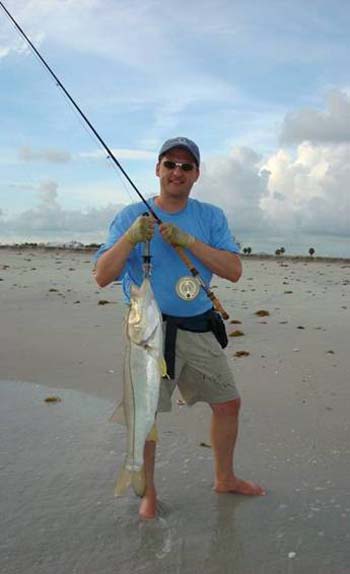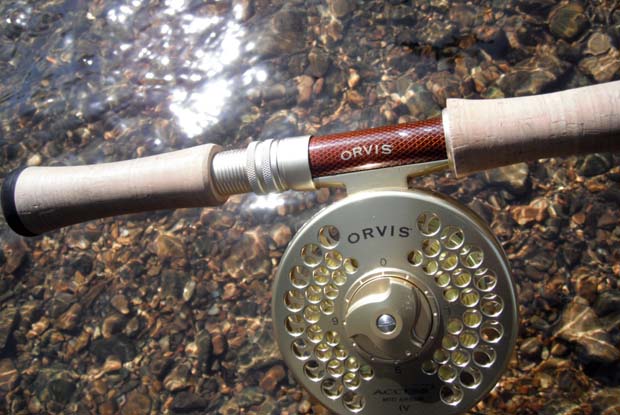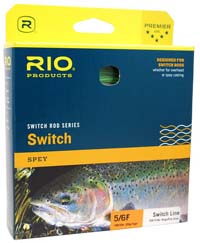PART I:
Nine footers, alternative fly rodding, switch rodding and why fly lines “rule” the roost
[dropcap]T[/dropcap]here is not much extremely groundbreaking in the realm of making fly rods “mo betta” because they are all now made from, as you well know, “Kryptonite”. A technology that makes fly rods built with them capable of corralling a bonefish that is Faster Than A Speeding Bullet, a marlin that is Stronger Than A Locomotive; and when cast, Able To clear Tall Buildings In A Single haul . . .
Will we be stuck with these casting sticks forever? Hope so. We’re good. You?
Last year’s version of fly rods made from Kryptonite, as well as the model the year before, and the year before that were all technologically mature. Novelty additions in colors and handles do not make for breakthrough noise. Unless there is a new technology, a true replacement for Kryptonite – bad fly rods will remain improbable to find at your local fly shop.
Are there any bad fly rods? Yes. Stick with trusted names and buy at a fly shop for YOUR best results. Generally, an $800 rod will out-cast a $300 rod, but out-distanced does not mean catching-sway
If looking for a new way to climb the fly fishing mountain try these flash back trends: Tenkara rods, fiberglass rods, switch rods and bamboo rods. The latter has become very popular again, and no, they are not wimpy-whippy sticks – but they are expensive.
Fly lines, not rods, now dominate everyone’s casting-fishing algorithms
Match a switch fly rod with correct fly line and monofilament leader – polyleader, or Skagit tip – mono leader for special performance and positive results. Fish those combos for the right fish in the right venue in the right conditions and you are off to the races with a full tank and a dance card that is likely to be filled. Rig wrong: wrong rod with wrong line and fishing it in the wrong way in the wrong venue for the wrong species and frustration might be all you will catch. The downside of new fly line technology is illiteracy – not understanding-knowing.
Did the fly line companies conspire to make our life on the water complicated? No. Better, actually
What they did do was pay attention to guides, and in many cases in-house talent. For example, Simon Gawesworth (RIO), Steve Rajeff (Loomis) and Kelly Galloup from Slide Inn, Montana; or in Europe the top anglers fly fishing the competitive circuit. Each, of course, owning more than one specialty born out of where they have fished and for the quarries they fish for. What the top fly line companies have done is match their lines to meet the special performnce needs of anglers, fisheries uniqueness’ and the animals found in them.
Anglers used to just pick a 10-weight double tapered fly line and put it on their corresponding 10-weight rod and go fish. It is not the case now and it can be a little confusing
The staggering number of line choices are voluminous because line manufacturers have narrowed the gap on the types of fishing: mountain brookies require a different set up (including rod) than trout nymphing on the Madison River. Carp fishing has a different rod/line set up requirement than mousing in Alaska and so on . . . Sails in Guatemala, bones in the Bahamas, tarpon in Key West Harbor, spinner sharks off Palm Beach, salmons in Michigan, GT’s in Christmas Island, and steelies in British Columbia have nothing in common with regard to rod, reel, fly line and leader. In the big-boy two-handed world it is scandi with monofilament leaders and poly leaders and Skagit lines with tips and mono leaders.

Shown: R.B. Meiser Highlander Switch Rod. The switch rod concept was originated in Oregon with Meiser. The shop’s four craftsmen have been building and designing two handed fly rods for anglers since the mid 1970s. R. B Meiser image.
Possibly, the most confusing line choices for fly fishing are consolidated in the true “tweener” or switch rod
Oddly, the switch rod, correctly made as a switch rod … not over 11-feet, is like a triple-option quaterback in football – Cordell Stewart (Slash) comes to mind of Steeler fame. He was not the fastest running back and he was not the best passer, but he could totally disrupt defenses with OPTIONS not attributable to either the ‘select’ quarterback or haul-ass running back. And so it is with a proper switch rod. Ask any Scandinavian or European salmon fisher-person and you will note that “they” think 11-foot is the absolute length limit of a proper switch rod . . . preferring 10-feet in many quarters. Their exacting argument holds up. Try casting a 12-foot rod overhead for an hour – ouch.
A switch rod is not the best at spey or scandi fly casting, that title is held by long rods, but is undeniably capable of out-distancing any conventional 9- or under 9-footer. A switch rod has other distinguishing advantages over the latter. For example, in the surf longer casts and covering more water are very productive; mending and “swinging” flies in riverine situations is much more doable, and a real casting advantage comes into play on a bay-boat or flats style skiff – think wind, big flies and the need for longer casts. Here, though, the preference would be limited to rods 10-feet.
A popular make of shorter switch rods, under 10-feet, have more lifting power than their equally weight-rated 9-foot cousin and much more than longer switch versions of equivelant rating.
An ocean angler preference
The concept of a “short” spey rod was the genius of Rob Meiser (R. B. Meiser Fly Rods), a Southern Oregonian with a shop in Central Point – just north of Medford, Oregon and south of the Rouge River.
NOTE: Featured Image courtesy of Orvis.







